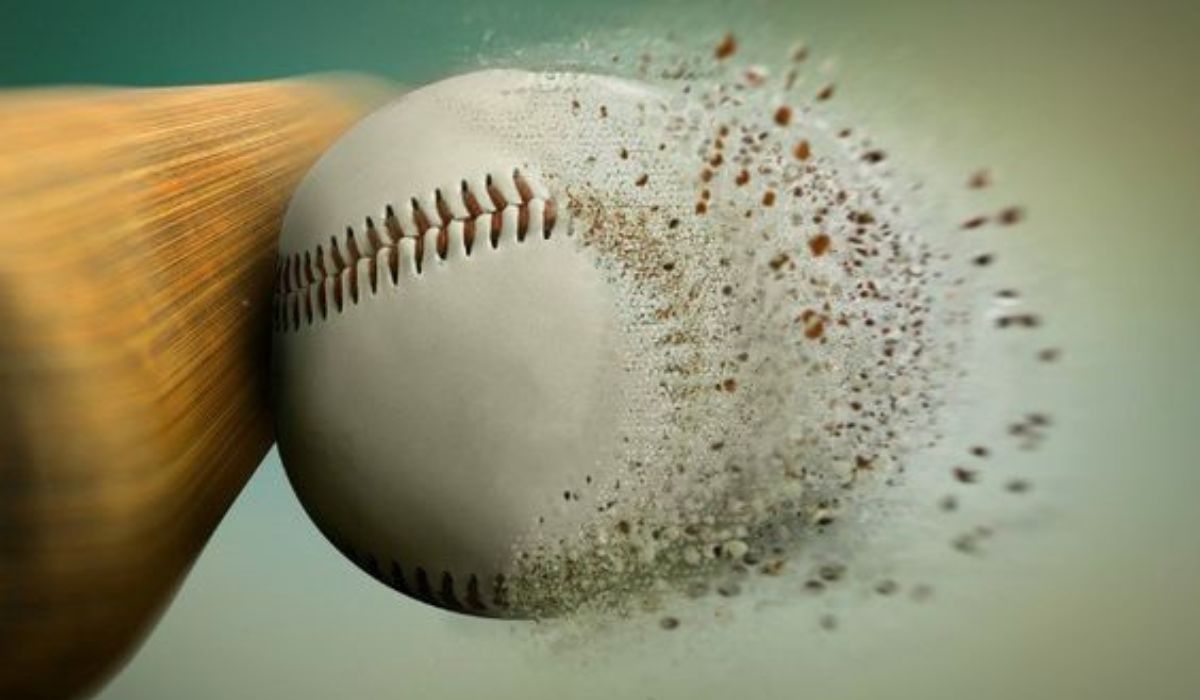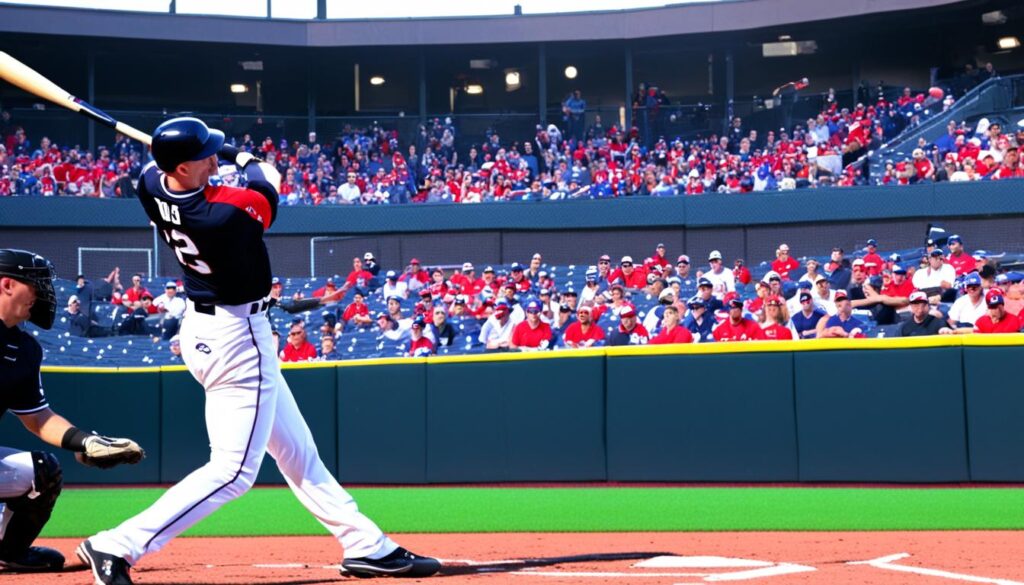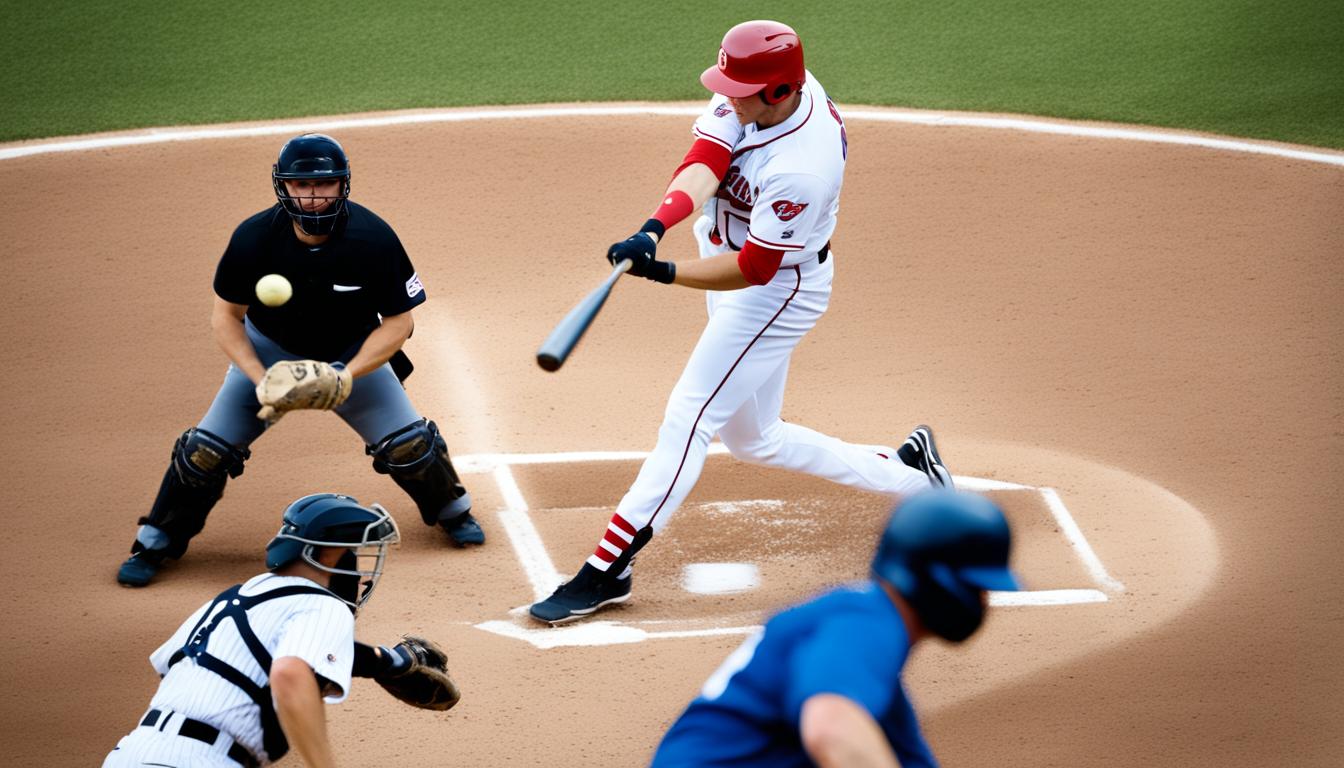
Image Credit-Pinterest
Baseball is a game filled with intricacies and terminology that can sometimes be confusing to newcomers. One common term you may have heard is a “hit.” But what exactly does it mean to get a hit in baseball? And more specifically, what is a double in baseball?
Before we dive into the details, let’s clear up the confusion and understand what constitutes a hit in baseball. A hit is awarded to a batter when they safely reach or pass first base after hitting the ball into fair territory without the benefit of an error or fielder’s choice.
Now, let’s focus on the intriguing question at hand: what is a double in baseball? This term often sparks curiosity among both casual fans and die-hard baseball enthusiasts. Is a double simply hitting the ball twice in a row? Or is there more to it? In this article, we will unravel the mystery behind doubles and explore their significance in the world of baseball.
Join us as we delve into the terminology, rules, statistics, and strategies surrounding doubles. Whether you’re new to the game or a seasoned fan, prepare to have your understanding of doubles in baseball challenged and expanded.
Key Takeaways:
- A hit in baseball is awarded to a batter when they safely reach or pass first base after hitting the ball into fair territory without the benefit of an error or fielder’s choice.
- A double in baseball refers to a hit that allows the batter to advance to second base.
- In this article, we will explore the definition, rules, statistics, and strategies surrounding doubles in baseball.
- Understanding doubles is crucial for appreciating the skill and impact of players in the game.
- Stay tuned as we unlock the secrets of doubles and deepen our knowledge of this exciting aspect of baseball.
The Significance of Hits in Baseball Stats
Hits are a fundamental measure in baseball statistics, providing valuable insights into a player’s offensive performance. The number of hits a player records contributes to important statistical metrics such as batting average, on-base percentage, and slugging percentage. These statistics help evaluate a player’s consistency, ability to make contact with the ball, and overall offensive impact.
Accurate hit recording and tracking are crucial for conducting statistical analysis and evaluating player performance. By recording and analyzing hit statistics, baseball teams and analysts can gain a deeper understanding of a player’s offensive contributions, strengths, and areas for improvement.
Hit tracking in baseball involves meticulously tallying the number of hits a player accumulates throughout a season or their career. This information plays a significant role in assessing a player’s development, comparing performance across seasons, and recognizing outstanding achievements.
Furthermore, hits in baseball serve as a testament to a player’s talent and impact on the game. Each hit represents a successful connection between the batter and the pitched ball, showcasing their ability to outmaneuver the opposing team’s defense and advance on the bases.
To emphasize the importance of hits in baseball stats, it is essential to accurately record each hit’s type, whether it be a single, double, triple, or home run. Different types of hits carry varying degrees of significance, reflecting a player’s power, speed, and overall offensive prowess.
“Hits are the building blocks of a player’s offensive achievements, providing concrete evidence of their ability to contribute to run production and offensive success.” – Baseball Analyst
- Hits play a crucial role in a player’s overall offensive performance and contribute to their statistical profile.
- Accurate hit recording and tracking enable comprehensive player and team analysis.
- Each hit showcases a player’s talent and their ability to make successful contact with the ball.
- Recording the specific type of hit further highlights a player’s power, speed, and offensive contributions.
In conclusion, hits hold significant importance in baseball statistics, painting a picture of a player’s offensive capabilities and impact on the game. Accurate recording, tracking, and analysis of hit statistics allow for comprehensive player evaluation and a deeper understanding of their offensive contributions.
The Impact of Hits on the Game
Hits are the lifeblood of an offense in baseball, serving as the catalyst for scoring runs and creating offensive momentum. Each hit has the potential to change the outcome of a game, igniting rallies and shifting the momentum in favor of the batting team. Hits not only contribute to individual player statistics but also play a crucial role in offensive strategies, such as manufacturing runs, moving baserunners into scoring position, and delivering crucial blows in key moments of the game.
When a batter successfully connects with the ball and sends it into play, the entire dynamic of the game can shift. A single hit can start a rally, with subsequent hits pushing runners across the bases and ultimately leading to runs being scored. Hits can demoralize the opposing team, forcing them to make defensive adjustments and increasing the pressure on the pitcher.
Coaches and players employ various strategies to increase the likelihood of getting hits and generating offense. These strategies often involve a combination of power hitting, contact hitting, and situational hitting. Power hitters focus on driving the ball deep into the outfield, aiming for extra-base hits such as doubles and home runs. Contact hitters prioritize making consistent contact with the ball, using technique and bat control to place the ball in areas where fielders are less likely to be able to make a play. Situational hitters adapt their approach based on the game situation, such as hitting behind a runner or executing a sacrifice bunt to advance baserunners.
The Importance of Hits in Baseball Offense
Hits are a fundamental measure of offensive success in baseball. They not only contribute to the overall score, but they also inflict psychological pressure on the opposing team. Each hit adds to a team’s offensive rhythm and forces the defense to react, potentially making mistakes and opening up additional scoring opportunities.
Furthermore, hits have a ripple effect on the game, as they allow for baserunners to advance and potentially score. When a batter gets a hit, it puts pressure on the defense to make a play, whether it’s fielding the ball cleanly or making an accurate throw to prevent the runner from advancing. This pressure can lead to defensive errors and mistakes, creating an advantage for the batting team.
In addition to their immediate impact on the game, hits also contribute to a player’s overall offensive performance and statistics. They are a key component of a player’s batting average, which measures their success at getting hits per at-bat, and their on-base percentage, which takes into account hits and walks to measure how often a player reaches base.
Unpacking Different Types of Baseball Hits
In the exciting world of baseball, hits come in various forms, each carrying its own level of excitement and impact on the game. Let’s dive into the different types of hits that bring fans to their feet.
Singles
A single is a hit that allows the batter to safely reach first base. It may not be as flashy as other types of hits, but it sets the stage for potential scoring opportunities. Singles require a combination of skill, timing, and precision to make contact with the ball and get on base.
Doubles
A double is an electrifying hit that enables the batter to advance to second base. It signifies an impressive display of power, speed, and athleticism. Doubles often result in advancing baserunners, putting pressure on the opposing team’s defense. They can be game-changers, injecting momentum into the offense.
Triples
A triple is arguably one of the most exciting plays in baseball. It occurs when the batter hits the ball into the outfield and successfully reaches third base. Triples require a combination of skill, speed, and strategic baserunning. They showcase the batter’s ability to hit for both power and distance, often resulting in an explosive offensive burst.
Home Runs
The grand finale of baseball hits is the illustrious home run. It occurs when the batter sends the ball soaring over the outfield fence in fair territory. Home runs elicit unparalleled excitement from fans, as they represent the pinnacle of offensive achievement. They not only score runs but also serve as a testament to the batter’s raw power and ability to drive the ball out of the park.

Each type of hit carries its own thrill and contributes to the dynamic nature of the game. From the humble single to the majestic home run, hits leave an indelible mark on both players and fans alike.
Counting Hits in Baseball
In the game of baseball, a hit is considered a significant achievement for a batter. It represents a successful contact between the bat and the ball, opening up opportunities for scoring runs and advancing baserunners. However, not every ball put in play is counted as a hit. There are specific criteria that must be met for a hit to be officially recorded.
To count as a hit in baseball, the ball must be hit into fair territory, meaning it lands or passes first or third base within the foul lines. If the ball is hit foul or goes out of play before reaching the outfield walls, it will not count as a hit. Additionally, the hit must occur without the interference of an opposing fielder. If a fielder catches the ball before it touches the ground, the batter is considered out, and it is not recorded as a hit.
For a hit to be awarded, the batter must reach first base or beyond before any fielder can tag them or throw the ball to another base to secure an out. This means that if the batter reaches first base safely but is subsequently tagged out trying to reach second base, it will still be considered a hit. The key factor is that the batter touches first base safely without being forced out.

It’s important to note that hits are not counted if a runner gets on base due to an error made by a fielder. Errors occur when a fielder fails to make a play that an ordinary fielder would be expected to make, and it results in the batter reaching base. In such cases, the batter is not credited with a hit, but rather the play is recorded as an error for the fielder.
The accurate counting of hits in baseball is crucial for tracking player performance, evaluating offensive production, and determining statistics such as batting average. Hits provide valuable insights into a batter’s ability to make solid contact and contribute to their overall offensive impact on the game.
Celebrating Hit Records and Milestones
In the rich history of baseball, numerous players have achieved remarkable hit records and milestones, becoming legends of the game. One of the most significant and revered milestones in baseball is reaching 3,000 career hits, symbolizing extraordinary consistency, longevity, and exceptional skill. Players who have accomplished this feat have etched their names in the annals of the sport, solidifying their place among the elite.
When a player reaches 3,000 hits, it signifies a lifetime of dedication, perseverance, and countless hours spent perfecting their craft. It is a testament to their ability to consistently connect with the ball and contribute to their team’s offensive success year after year. These players become part of an exclusive club, joining the ranks of the game’s all-time greats.
Baseball players with the most hits and notable hit achievements have left a lasting impact on the sport. Their accomplishments serve as inspiration for aspiring athletes, fans, and even future generations. Each time a player surpasses a significant milestone, it evokes a sense of awe and admiration for their immense talent and unwavering dedication to the game.
“Reaching 3,000 hits is an incredible achievement. It represents consistency, longevity, and a deep understanding of the game. The players who have achieved this milestone have etched their names in baseball history forever.” – Hall of Famer Cal Ripken Jr.
Notable hit achievements in baseball extend beyond the 3,000-hit milestone. Players who hold records for the most hits in a single season, the highest career hit totals, or other remarkable hit-related accomplishments are celebrated for their remarkable achievements. These records provide a glimpse into the extraordinary careers of these players and contribute to the rich tapestry of baseball history.
Hit records and milestones in baseball encapsulate the essence of the sport, showcasing the skill, determination, and historic achievements of players. They serve as a reminder of the incredible feats accomplished on the diamond and inspire generations to come. As fans, we celebrate these remarkable achievements while cherishing the memories created by the players who etch their names in baseball’s hallowed record books.
Conclusion
Hits play a significant role in baseball, both in terms of individual player performance and team success. Understanding what constitutes a hit, the different types of hits, and the impact of hits on the game allows fans to fully appreciate the nuances of the sport.
Hits are not just numbers; they represent the culmination of skill, strategy, and excitement, making them an integral part of the beloved game of baseball. Each hit showcases a batter’s ability to make solid contact with the ball and safely reach base, contributing to their offensive prowess. They also provide opportunities for baserunners to advance, creating scoring chances for the team.
Whether it’s a single, double, triple, or home run, each type of hit carries its own level of excitement and impact on the game. Singles are the foundation of a strong offensive inning, while doubles and triples demonstrate a batter’s speed and ability to hit for extra bases. Home runs, the ultimate display of power, can dramatically change the momentum of a game.
So, the next time you watch a game, pay close attention to the hits. They are not just statistics but a reflection of the skill, strategy, and excitement that make baseball the beloved sport it is today.
Source Links
- https://en.wikipedia.org/wiki/Hit_(baseball)
- https://www.nations-baseball.com/hit-in-baseball/
- https://www.korebaseball.com/blogs/blog/what-counts-as-a-hit-in-baseball

Meet Daniel Anderson, the heart and soul behind Baseball Pro Picks. At 49, Daniel’s life has revolved around baseball, a passion that’s as strong today as it was when he first fell in love with the game. Living in the USA, Daniel has dedicated countless hours to watching, analyzing, and understanding every pitch, hit, and home run, making almost no game missed. His deep-rooted love for the sport is matched only by his commitment to sharing insightful, expert analysis with fellow baseball enthusiasts. With decades of experience and a keen eye for the game’s nuances, Daniel brings a unique perspective that enriches Baseball Pro Picks. Trust Daniel to guide you through the intricacies of baseball with the authority and trustworthiness of a true aficionado.


